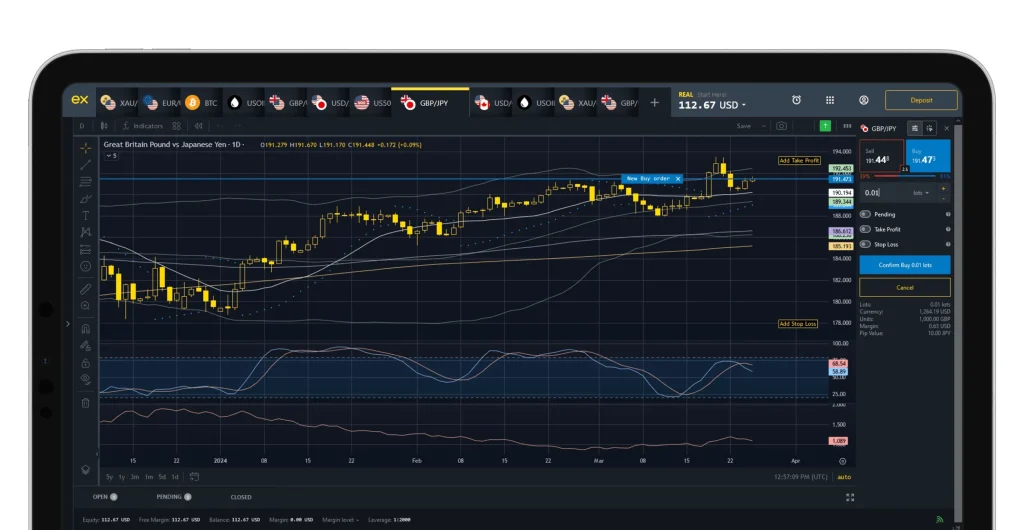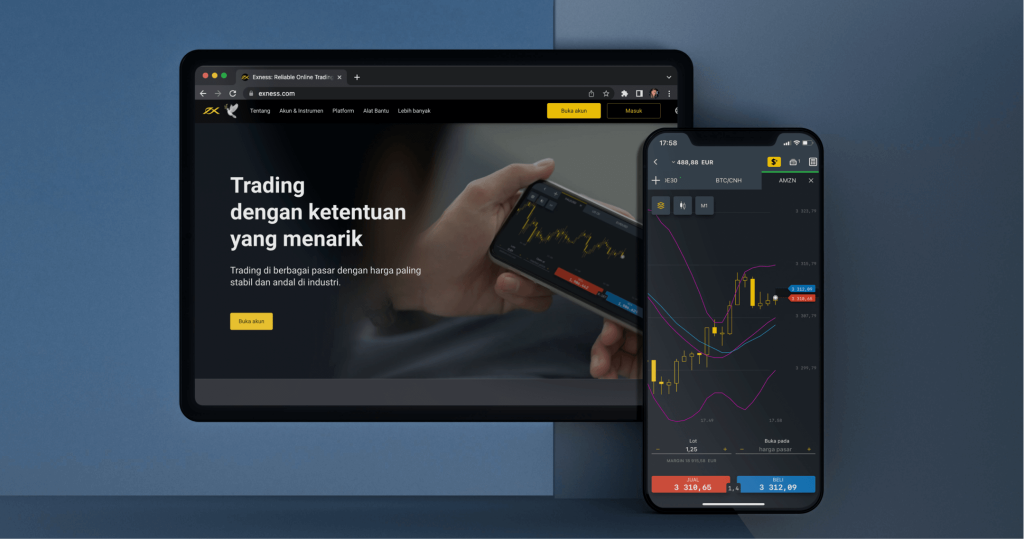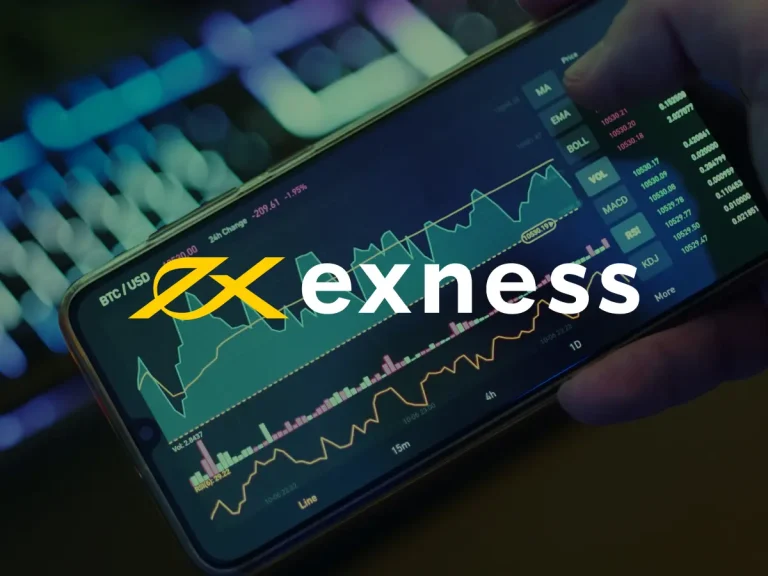Home » Leverage
Leverage Fundamentals for Philippine Traders
Leverage represents the ratio between the trade size and required margin. For example, with 1:1000 leverage, a 1margincontrols1 margin controls 1margincontrols1000 in trading volume.Available Leverage Ratios at Exness
| Account Type | Maximum Leverage | Margin Requirement |
| Standard | Up to 1:2000 | From 0.05% |
| Raw Spread | Up to 1:2000 | From 0.05% |
| Zero | Up to 1:2000 | From 0.05% |
| Pro | Up to 1:2000 | From 0.05% |
- Instrument traded
- Account balance
- Regulatory restrictions
- Market conditions
Leverage Caps by Instrument Category
| Instrument Type | Maximum Leverage | Notes |
| Major Forex Pairs | 1:2000 | EUR/USD, GBP/USD, USD/JPY, etc. |
| Minor Forex Pairs | 1:1000 | AUD/CAD, EUR/NZD, etc. |
| Exotic Forex Pairs | 1:500 | USD/TRY, EUR/ZAR, etc. |
| Metals | 1:500 | Gold, Silver |
| Energies | 1:100 | Crude Oil, Natural Gas |
| Indices | 1:100 | US30, UK100, etc. |
| Cryptocurrencies | 1:20 | BTC/USD, ETH/USD, etc. |

How Leverage Functions in Practice
Leverage directly affects margin requirements and potential outcomes.
Margin Calculation Examples
For a 0.1 lot position in EUR/USD (contract size 10,000 units):
Leverage | Margin Required | Calculation |
1:100 | $100 | (10,000 × 1.0000) ÷ 100 |
1:500 | $20 | (10,000 × 1.0000) ÷ 500 |
1:1000 | $10 | (10,000 × 1.0000) ÷ 1000 |
1:2000 | $5 | (10,000 × 1.0000) ÷ 2000 |
Profit and Loss Magnification
A 10-pip movement in EUR/USD (approximately $0.0010) with a 0.1 lot position:
Leverage | Initial Margin | P/L from 10 Pips | Return % |
1:100 | $100 | $10 | 10% |
1:500 | $20 | $10 | 50% |
1:1000 | $10 | $10 | 100% |
1:2000 | $5 | $10 | 200% |
Adjusting Leverage on Exness Accounts
Philippine traders can modify leverage ratios through their personal area.
Leverage Change Process
- Log in to Exness Personal Area
- Navigate to “Accounts” section
- Select the relevant trading account
- Click “Change Leverage” option
- Choose desired leverage from available options
- Confirm the adjustment
Important considerations before changing leverage:
- All positions must be closed before adjusting leverage
- Changes take effect immediately after confirmation
- Leverage can be changed multiple times without restrictions
- Automatic leverage reduction occurs at specific account balance thresholds
Account Balance Leverage Tiers
Exness automatically adjusts maximum available leverage based on account equity:
Account Equity | Maximum Leverage |
0−0 – 0−1,000 | Up to 1:2000 |
1,000−1,000 – 1,000−5,000 | Up to 1:1000 |
5,000−5,000 – 5,000−30,000 | Up to 1:500 |
30,000−30,000 – 30,000−100,000 | Up to 1:200 |
$100,000+ | Up to 1:100 |
Margin Levels and Margin Calls
Margin level determines account status and potential stop-outs.
Understanding Margin Terminology
Term | Definition | Formula |
Equity | Current account value | Balance + Floating P/L |
Used Margin | Funds reserved for open positions | Position Size ÷ Leverage |
Free Margin | Available funds for new positions | Equity – Used Margin |
Margin Level | Account health indicator | (Equity ÷ Used Margin) × 100% |
Margin Level Thresholds
Margin Level | Account Status | Action |
Above 100% | Normal trading | No restrictions |
100% | Margin Call | Warning notification |
Below 100% | Stop Out Risk | Positions at risk |
30% or below | Stop Out | Positions close automatically |

Risk Management with High Leverage
High leverage requires careful risk management strategies.
Position Sizing Guidelines
Position sizing relates directly to risk management when using leverage. Traders should calculate the appropriate position size based on:
For a $1,000 account risking 2% with 20-pip stop loss on EUR/USD:
- Risk amount: 1,000×21,000 × 2% = 1,000×220
- With 0.01 lot, each pip ≈ $0.10
- Maximum position: 10 micro lots (0.10 standard lot)
This approach ensures that a single trade cannot lose more than 2% of account value.
Risk Mitigation Strategies
- Use stop loss orders on every position
- Limit total exposure to 5-10% of account
- Reduce leverage during volatile market conditions
- Consider smaller position sizes for correlated instruments
- Maintain adequate free margin (minimum 50% of equity)
Advantages and Disadvantages of High Leverage
Potential Benefits
Benefit | Explanation |
Capital Efficiency | Control larger positions with smaller deposits |
Diversification | Spread capital across multiple markets |
Amplified Returns | Potential for higher percentage gains |
Lower Entry Barrier | Access markets with minimal initial capital |
Associated Risks
Risk | Explanation |
Magnified Losses | Losses amplified by same factor as profits |
Margin Calls | Potential for rapid account depletion |
Psychological Pressure | Emotional trading decisions under greater stress |
Overtrading | Temptation to open excessive positions |
Frequently Asked Questions
Can I change leverage if I have open positions?
No, all positions must be closed before modifying leverage. This prevents unexpected margin requirement changes that could trigger stop-outs.
Why did my maximum leverage decrease after depositing more funds?
Exness automatically reduces maximum leverage as account equity increases. This tiered system protects larger accounts from excessive risk (e.g., dropping from 1:2000 to 1:1000 above $1,000).
How does leverage affect overnight fees (swaps)?
Leverage doesn’t change swap rates, but higher leverage allows larger positions with the same capital, potentially increasing total swap charges in absolute terms.
What is the maximum leverage offered by Exness?
Exness offers leverage up to 1:2000 for accounts with balances under $1,000. Maximum leverage decreases as account equity increases through a tiered structure to manage risk.
Does higher leverage increase the risk of margin calls?
Yes, higher leverage increases margin call risk as smaller price movements against your position can trigger stop-outs. Always use appropriate position sizing relative to your account balance.


